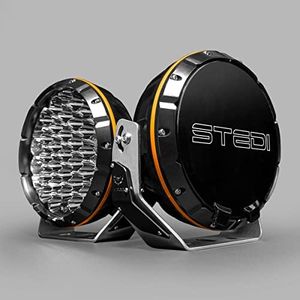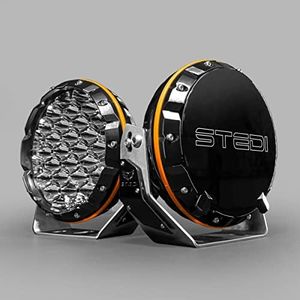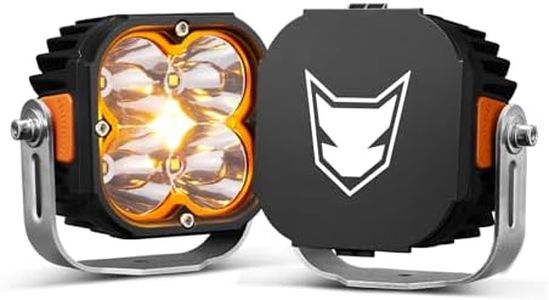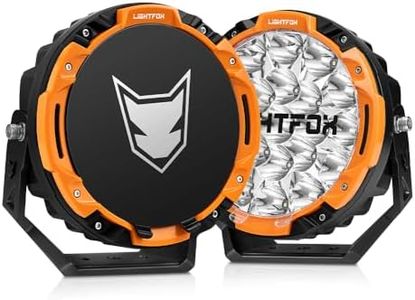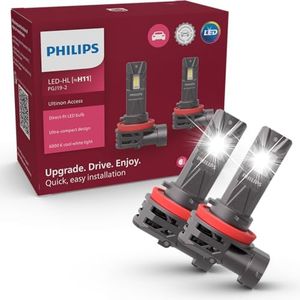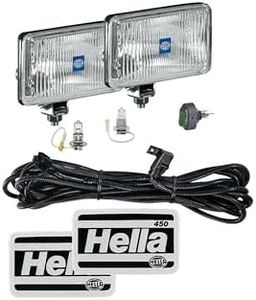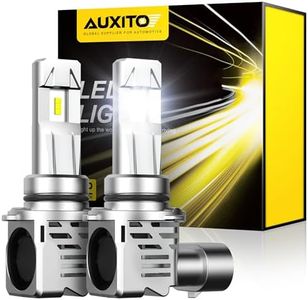We Use CookiesWe use cookies to enhance the security, performance,
functionality and for analytical and promotional activities. By continuing to browse this site you
are agreeing to our privacy policy
10 Best Led Driving Lights
From leading brands and best sellers available on the web.Buying Guide for the Best Led Driving Lights
Selecting the best LED driving lights can make a big difference in your nighttime visibility, safety, and comfort while driving. There is a wide range of LED driving lights out there, each with features suited to different vehicles, road conditions, and personal preferences. To make the right choice, it’s important to understand the key specifications that really matter. Instead of just looking for the brightest or most popular product, consider how and where you drive, the size of your vehicle, and any particular lighting needs you have. By familiarizing yourself with the main specs, you’ll be able to confidently pick the LED driving lights that will work best for your situation.Brightness (Lumens)Brightness, measured in lumens, tells you how much light the LED driving lights put out. This is important because more lumens generally mean a brighter light, which helps you see further and clearer at night or in poor weather. Typical values can range from around 2,000 lumens (more suitable for smaller vehicles or city driving) up to over 10,000 lumens (for off-road or rural use). Consider your typical driving environment—brighter lights are best for open highways or off-road, but may be too dazzling for city use or oncoming traffic. Choose a brightness level that complements your driving conditions without creating glare for you or other drivers.
Beam PatternThe beam pattern describes how the light is spread out from the fixture—usually either spot, flood, or a combination (combo). Spot beams focus the light in a narrow, long-distance pattern, ideal for seeing far down the road. Flood beams spread light over a wider area, which is great for illuminating the sides of the road or near the vehicle. Combo beams give you a mix of both. If you mostly drive on straight, open roads, spot beams are useful. For winding roads, trails, or if you need a good look at the roadside, a flood or combo pattern is more suitable. Match the pattern to the type of driving you do most often.
Color Temperature (Kelvin)Color temperature, measured in Kelvins, describes the color of the light produced. Lower values (around 3,000K) are warmer and have a yellowish tint, which cuts through fog and rain well. Higher values (around 6,000K) are cooler and closer to daylight, which can appear whiter or even bluish, helping with visibility and eye comfort. For regular road driving, a neutral white (between 4,500K and 6,000K) is popular. If you often drive in fog, rain, or dusty conditions, you might want a warmer color temperature.
Build Quality and Waterproof RatingBuild quality refers to how sturdy the light casing is and whether it’s designed to resist water and dust. The waterproof rating, like IP67 or IP68, tells you how well it stands up to the elements. Higher ratings mean better protection—especially important if you drive off-road, in bad weather, or wash your vehicle often. If your driving involves harsh environments, off-roading, or lots of rain, prioritize higher waterproof and dustproof ratings. For city or occasional use, you may not need the highest protections.
Mounting and SizeThe way the lights are mounted and their physical size affect both installation and performance. Smaller lights are easier to fit in tight spaces and look subtler, while larger lights often offer more brightness or wider coverage. The mounting brackets should be strong, adjustable, and fit your vehicle easily. Think about how much space you have where you intend to install the lights, and whether you prefer a discreet or bold look on your vehicle. Make sure the mounting solution is secure for your driving style and terrain.
Power Draw (Wattage)Wattage reflects how much power the LED driving lights need to operate. While LEDs are energy efficient, high-powered models can still draw a significant amount from your vehicle’s electrical system. If your vehicle has a small alternator or limited electrical capacity, lower wattage lights may be wiser to avoid draining your battery or overloading circuits. For most modern vehicles, medium wattage lights are fine, but always check your vehicle’s specifications before installing powerful lighting.
